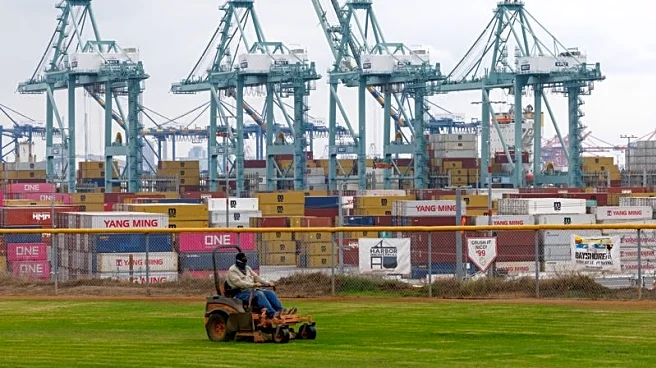What's Happening?
The U.S. auto industry has experienced a significant increase in new-vehicle inventories, reaching 3.14 million units in November. This surge comes amid ongoing adjustments in the market, influenced by
factors such as supply chain disruptions and changes in consumer demand. The industry is also awaiting details on how recent U.S.-China trade agreements will affect tariffs and rare-earth export controls, which could impact production costs and availability of key components.
Why It's Important?
The rise in vehicle inventories is crucial for the auto industry, as it may signal a recovery from previous supply chain challenges. Increased inventory levels can lead to more competitive pricing and improved availability for consumers, potentially boosting sales. However, the industry must navigate uncertainties related to international trade agreements, which could affect production costs and supply chain stability. Stakeholders, including manufacturers and retailers, will need to adapt to these changes to maintain market competitiveness.
What's Next?
The auto industry will closely monitor the impact of the U.S.-China trade deal on tariffs and rare-earth export controls. Manufacturers may need to adjust their strategies to mitigate potential cost increases and ensure a steady supply of components. Retailers will likely focus on optimizing inventory management to capitalize on increased availability and consumer demand. The industry may also explore alternative sourcing options to reduce dependency on affected materials.
Beyond the Headlines
The inventory surge may reflect broader economic trends, such as shifts in consumer spending and confidence. As the industry adapts to new trade dynamics, there could be long-term implications for global supply chains and manufacturing practices. The focus on rare-earth materials highlights the need for sustainable sourcing solutions, which could drive innovation in material science and environmental responsibility.












